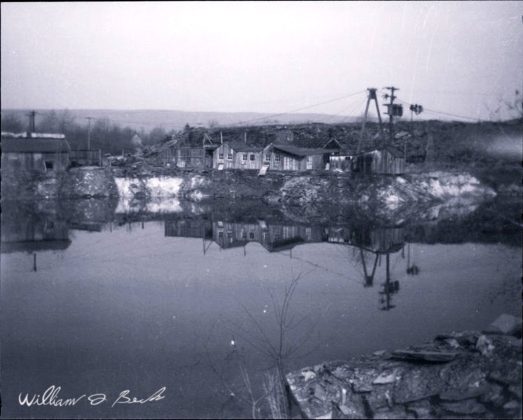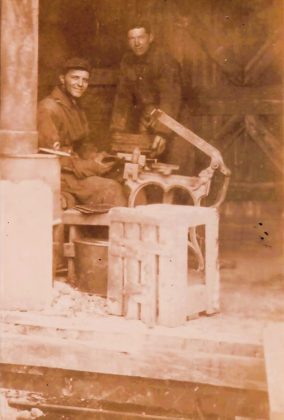A few weeks ago, Cindy Beck Deppe, of the landmark Becky’s Drive-In in Berlinsville, sent a number of photographs to Larry Oberly and this writer. Her father, William Beck, founder of the drive-in, had a keen interest in quarries. As a young man he used his newly purchased camera to photograph local slate quarries. At the age of 13 he was given a job as a water boy at the Washington Quarry in Berlinsville. He worked with his father and uncles at the quarry. Eventually, he became a bell ringer and hoist operator.
The Lehigh Township Historical Society’s book, “Images of America: Lehigh Township” takes us back to the age of slate in the township.
They write, “The township traces much of its history back to slate. Their extensive research lists 28 quarries. Many quarries changed ownership over the years so writing their history is complex.”
A number of years ago some of our readers may recall I researched the history of Chapman Borough and the Chapman Slate Company. We interviewed many residents of the community which provided us with a wide range of information on quarry operations. One interview was with former Chapman’s Mayor, Mr. Harold Kocher. His family owned a roofing business in Chapman. Another was Mr. Joseph George who worked for the slate company.
Mr. George, Reverend Kenneth A. Klingborg and members of the Chapman Quarries Historical Society wrote, “Chapman Borough and the Chapman Slate Company: A Brief History,” giving the reader a picture of local quarry history.
Mr. George writes, “One of the largest deposits of slate in the world is located in Pennsylvania south of the Blue Mountain from the west side of the Lehigh River east to the Delaware River. It was quarried extensively from the mid 1800s to the mid 1900s.
The industry at the time was the chief employer in the boroughs of Slatedale, Emerald, Slatington, Danielsville, Chapman, Belfast, Edelmans, Wind Gap, Pen Argyl, Bangor, East Bangor and Portland.”
The “Chapman Borough and Chapman Slate Company: A Brief History” was written in 1999. At the time there were only three operating slate quarries remaining in the area. The depth of these quarries varied as deep as 250 feet. The book gives one a profile of a working slate community.
William Chapman came from England. The family worked in local cement companies. They brought their skills to what is now the Borough of Chapman. They began to explore the local slate quarries and found some rich slate deposits.
In 1850, they opened a quarry and settled in the community, which now bears their name. The Chapman Slate Company attracted skilled slaters from all over the world, including North Wales, Cornwall and Devon England. Later, many workers came from Italy to work in the quarries. They would settle in Bangor, East Bangor and Roseto.
In 1865, Chapman became incorporated into a borough. The quarries had many hard-working slaters who were extremely proud to see their slate being used throughout our nation.
Today, many vacant quarries remind us of the industry’s past. One of the few slate operations continuing the slate heritage is Penn Slate, of Slatington.











